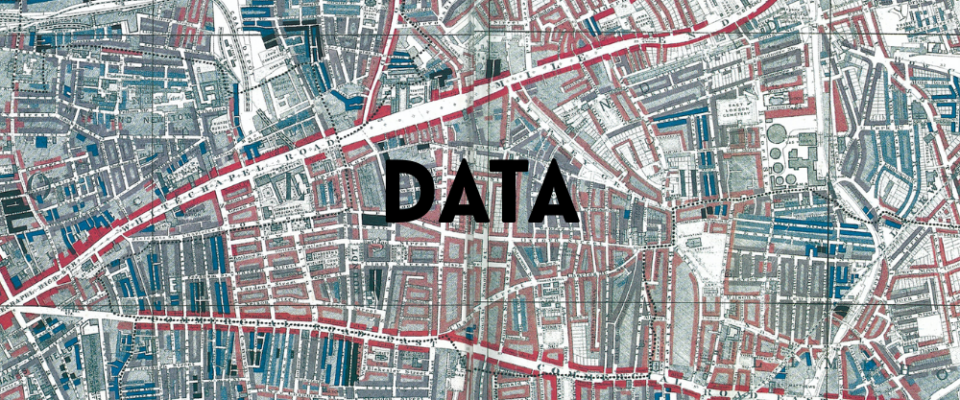By Rig Freyr
Questions
How did the koseki system develop across Japanese history, and what types of discrimination has it contributed to in modern Japanese society?
Discussion
This report focuses on Japan’s koseki or National Household Registry system, which was first introduced by the Japanese government during the 7th century for the sake of monitoring the Japanese population and managing issues of citizenship. The system was abandoned during the Heian period, but was partially reinstated by the Tokugawa regime via a similar scheme called the ninbetsu aratame-cho; it was fully re-adopted during the Meiji period and has remained in use in some form by the Japanese government ever since. Although the government now also keeps a wide variety of demographic statistics and survey data on the citizenry through its National Bureau of Statistics, the National Household Registry has always been the primary database that the government uses to determine eligibility for citizenship and access to government services. As such, Japan’s reliance on the koseki system has facilitated many cases of social and legal discrimination throughout the nation’s long history. In this report, I will present several articles that explain the major types of koseki-based discrimination prevalent in Japan society today; together, these studies represent a fine example of how demographic data can be used to shape a country’s social norms.
Before I get into the articles, however, I would like to make a quick comment on the relative lack of English-language sources on the koseki and the issues surrounding it. Indeed, all but one of the articles I was able to find on the subject come from a single edited collection, published in 2014 by D. Chapman and K.J. Krogness. Although the collection does manage to cover nearly every aspect of the koseki system, it is unfortunate to see such an important component of Japanese life given such little academic attention in the English-speaking world. However, since the koseki is a uniquely East Asian style of demographic system that does not have many proper analogues in the West, the seeming lack of Western interest in the subject is understandable to some degree.
My first source is “The Development of the Modern Koseki,” by Kenji Mori of Ibaraki Christian University. As the title suggests, the article gives a general overview of the history of koseki record-keeping, beginning with the inception of the practice in 670 AD by Emperor Tenji as a way of cataloguing the estates and relative holdings of his subjects. This early version of the koseki, of course, was not used to track rights of citizenship as it is in the modern day; at that time, Japan had experienced so little contact with the outside world that nationality was not considered important enough to be a matter of government record. (Mori 2014, 59-60) During the Edo period (1600-1868), however, as foreigners began making increasing albeit gradual appearances on Japanese shores, the Tokugawa shogunatecreated a new system—a parish registry known as the shuumon ninbetsu aratame-chou (宗門人別改帳) or “religious and population investigation registers” system—that was similar to the original koseki, but now included both province of origin and religious denomination as data points. This in turn was succeeded in 1872 by the Meiji version of the koseki system, which the Japanese government has maintained with relatively few modifications up to the present day. The religious character of the aratame-cho was significantly de-emphasizedin its Meiji successor due to the recognition of religious freedom by the Meiji government; however, the new koseki still provided the government with a systematic, legal foundation for segregating the Japanese people based on race, ethnicity, and level of citizenship (Mori 2014 65-68). Naturally, this paved the way for a host of forms of legalized discrimination against Japanese minority populations (as well as immigrants), a trend that has persisted throughout the history of modern Japanese society.
In fact, as David Chapman shows in his article “Managing ‘Strangers’ and ‘Undecidables:’ Population Registration in Meiji Japan,” many minority populations were even cut out of the national registry system entirely at various points during the Meiji period. The article describes in turn how Ainu, Ryukyu Islander, and other communities such as burakumin/hinin were often placed into their own sets of designated minority population registers by the Meiji government, albeit in a sporadic and disorganized fashion (Chapman 2014, 95-97). As a result, for a good portion of Japan’s modern history, the existence of these sub-communities remained unlisted in the main koseki records of Japan’s mainstream citizenry. The bureaucratic inefficiencies that this multiple-koseki system created eventually led the government to decisively re-integrate each of Japan’s minority populations back into the main record—for example, the Ainu and immigrant residents of the former imperial territory of Karafuto (now the Russian-controlled island of Sakhalin) were returned to the koseki proper in 1923, whereas Ainu in general received the same legal recognition in 1932 (Chapman 2014, 112). However, no compensation was given to these minorities for the legal discrimination they suffered during the decades it took for the government to institute the necessary reforms.
In addition to enforcing ethnic and cultural norms as seen above, the koseki has also long been used by the Japanese government to enforce social norms regarding family structure and relationships as well. Out of the articles in Chapman and Krogness’ collection, this trend is most clearly expounded on in “Birth registration and the right to have rights: The changing family and the unchanging koseki” by Vera Mackie. According to the author, the koseki system in its modern form is based on a socially ‘proper’ view of the Japanese family as a heterosexual, monogamous married couple with children; any family that deviates from this preconceived vision is socially punished for doing so via the inclusion of stigmatized labels in their koseki record. For example, children born out of wedlock are explicitly recorded as being ‘illegitimate,’ and can even have trouble receiving certain government services such as passport issuances due to their resultant dubious legal status. (Mackie 2014 204). Furthermore, people who choose to get divorced or engage in a series of marital relationships also have their status, along with the names and relatives of each of their partners, explicitly recorded in their koseki—while this practice does not tend to come with any additional legal repercussions, it can easily lead to workplace discrimination against the individual in question (Mackie 2014, 205).
Finally, we have the article “Officially invisible: the stateless (mukokusekisha) and the unregistered (mukosekisha)” by Tien-Shi Chen, which documents incidents of kokuseki-related discrimination against a more recent type of minority community within Japanese society: namely, international migrants and refugees (e.g., zainichi Korean families, many of whom have resided in Japan for decades without full citizenshp status or documentation). In the twentieth century, Japan acquired a number of large international minority populations—largely from other East Asian countries—that have each established a lasting presence in modern Japanese society. For example, the families of many Korean immigrants who migrated to Japan during the prewar period (usually as a result of Japan’s colonization of Korea) remain in the country today, being referred to as Zainichi (在日or “residing in Japan”) Koreans. However, much like the Ainu, Ryukyu, and other communities before them, significant portions of these minority groups have been excluded from the koseki registration system (and all the legal rights that come with it) for a number of political and cultural reasons (Chen 2014, 223).
Looking again to the Zainichi example, K. Tsutsui and H.J. Shin note that Zainichi Koreans were denied many new forms of government aid implemented after the American occupation, due to technically not being considered Japanese citizens in the koseki in spite of their permanent residency status. In addition, Zainichi were legally required to make their origin a matter of public record at their local city hall, opening them to discrimination from the surrounding community, until the law was changed in 1993 (Tsutsui & Shin 2008, 396-397). Although the legal and social status of Zainichi Koreans and other immigrant populations has reportedly improved in recent years due to greater integration with the mainstream Japanese community, these minorities have often had to sacrifice much of their distinctive cultural identity in the process (Tsutsui & Shin 2008, 400).
Sources
Chapman, D., and K.J. Krogness, ed. Japan’s Household Registration System and Citizenship: Koseki, Identification and Documentation. New York: Routledge, 2014.
Mori, Kenji. “The Development of the Modern Koseki.” Ibid., pp. 59-76.
Mackie, Vera. “Birth registration and the right to have rights: the changing family and the unchanging koseki.” Ibid., pp. 203-220.
Chen, Tien-Shi (Lara). “Officially Invisible: the Stateless (mukokusekisha) and the Unregistered (mukosekisha).” Ibid. pp. 221-238.
Tsutsui, K., & Shin, H. J. “Global Norms, Local Activism, and Social Movement Outcomes: Global Human Rights and Resident Koreans in Japan.” Social Problems 55, vol. 3 (2008): 391-418.
*Images from Wikimedia Commons and Flickr fair-use files.





